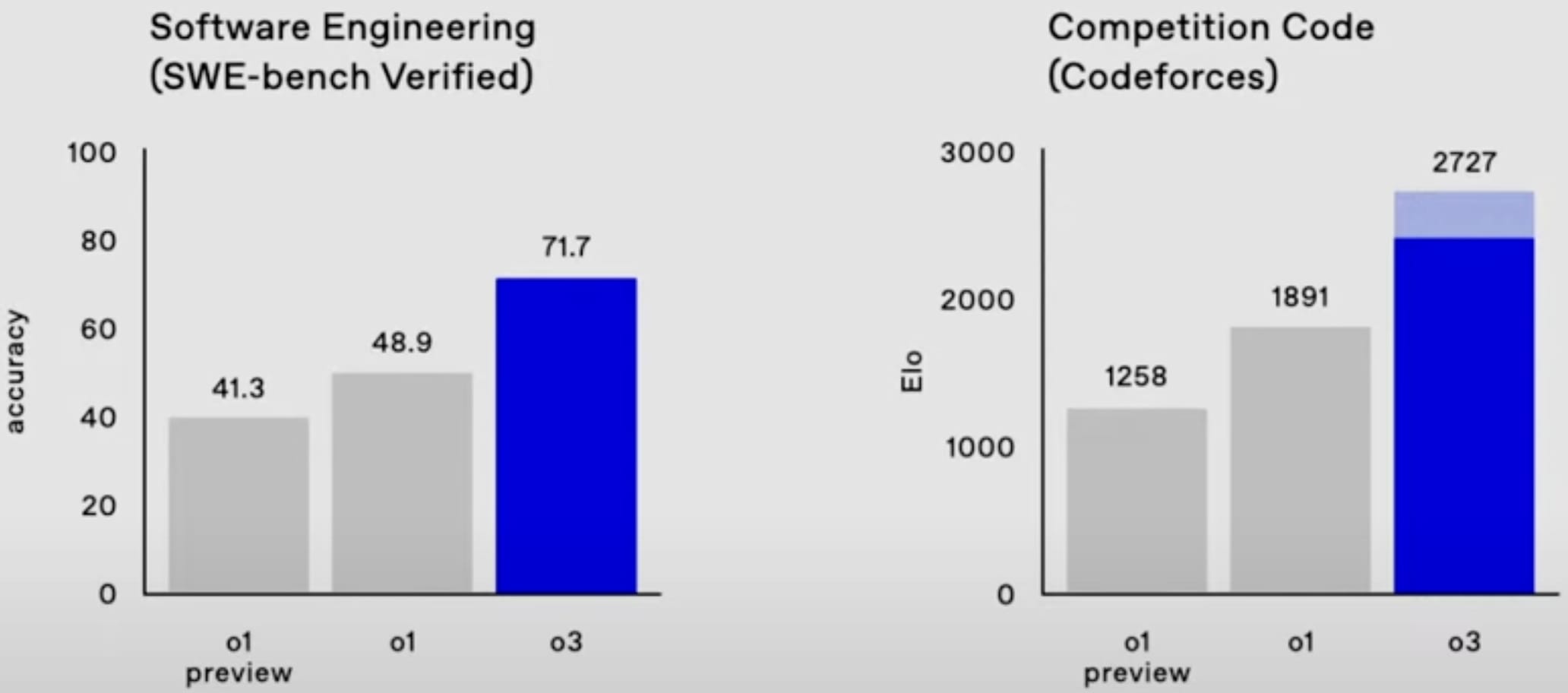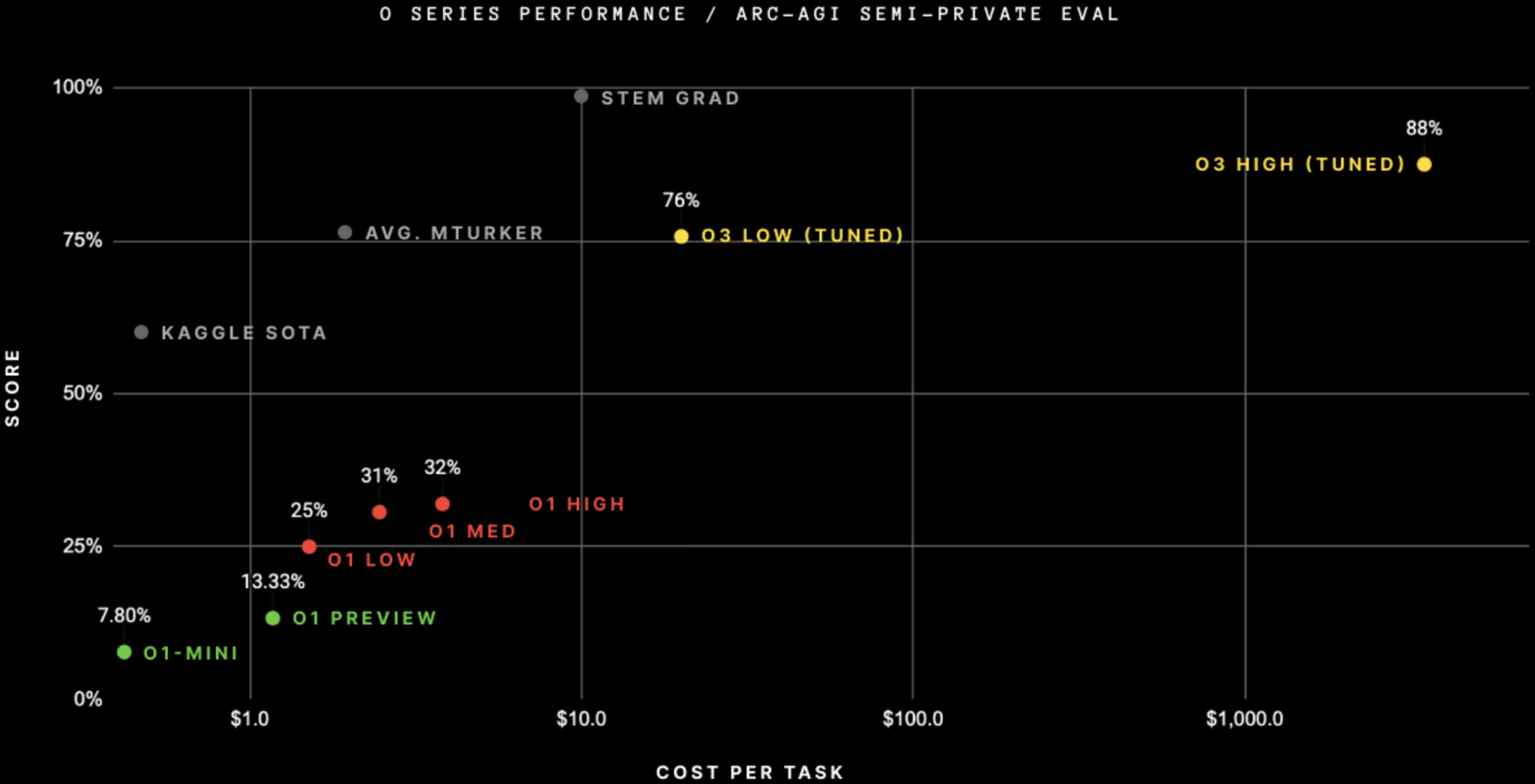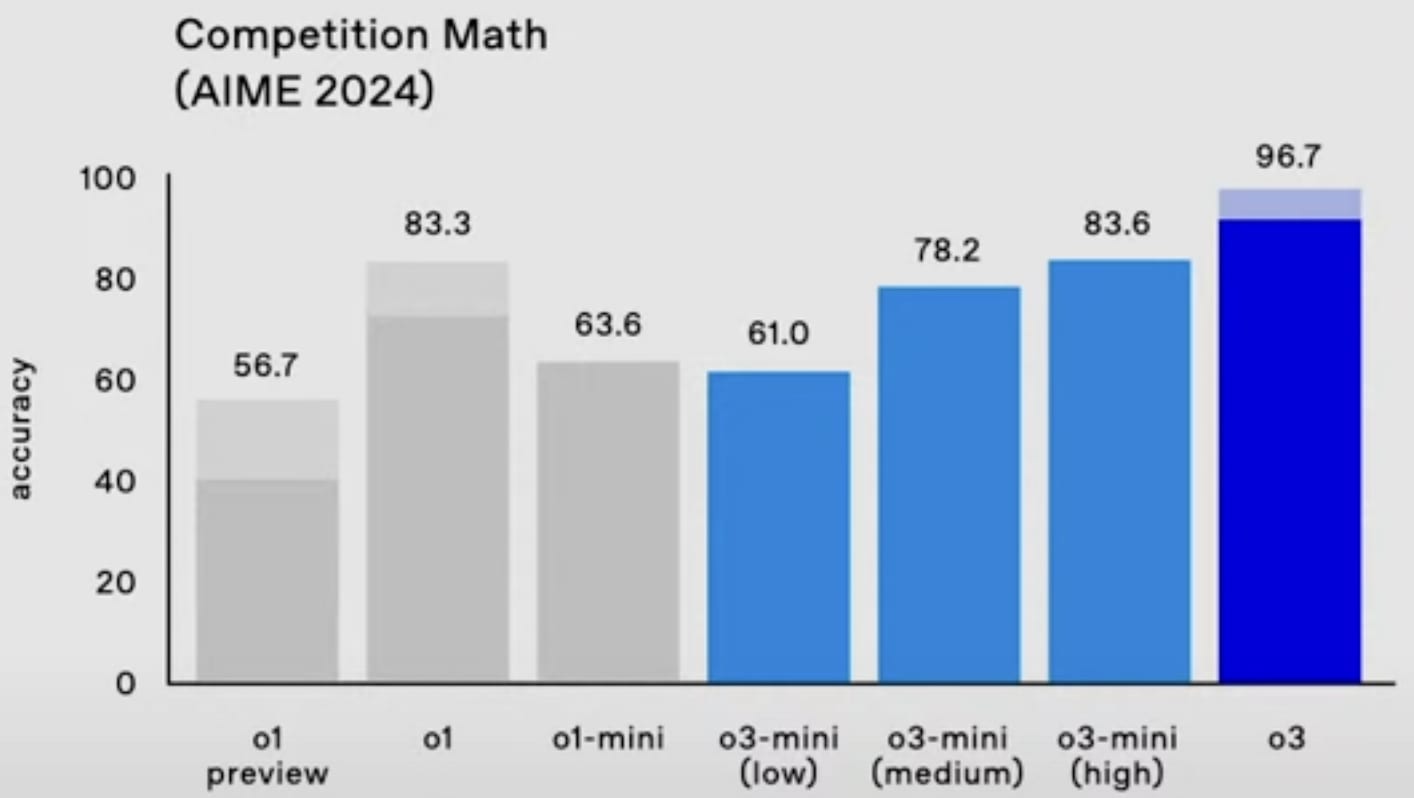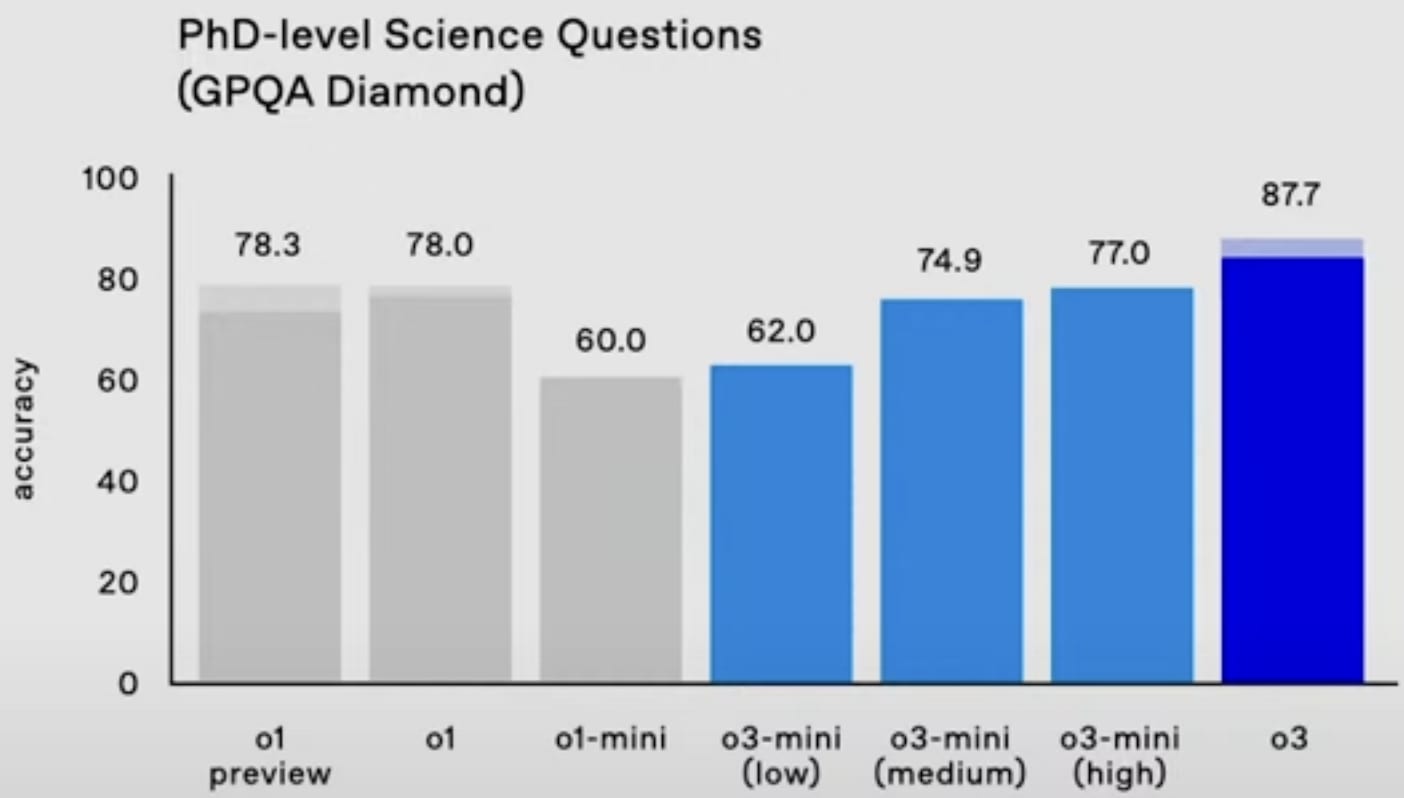See livestream, site, OpenAI thread, Nat McAleese thread.
OpenAI announced (but isn't yet releasing) o3 and o3-mini (skipping o2 because of telecom company O2's trademark). "We plan to deploy these models early next year." "o3 is powered by further scaling up RL beyond o1"; I don't know whether it's a new base model.
o3 gets 25% on FrontierMath, smashing the previous SoTA. (These are really hard math problems.[1]) Wow. (The dark blue bar, about 7%, is presumably one-attempt and most comparable to the old SoTA; unfortunately OpenAI didn't say what the light blue bar is, but I think it doesn't really matter and the 25% is for real.[2])

o3 also is easily SoTA on SWE-bench Verified and Codeforces.

It's also easily SoTA on ARC-AGI, after doing RL on the public ARC-AGI problems[3] + when spending $4,000 per task on inference (!).[4] (And at less inference cost.)

ARC Prize says:
At OpenAI's direction, we tested at two levels of compute with variable sample sizes: 6 (high-efficiency) and 1024 (low-efficiency, 172x compute).
OpenAI has a "new alignment strategy." (Just about the "modern LLMs still comply with malicious prompts, overrefuse benign queries, and fall victim to jailbreak attacks" problem.) It looks like RLAIF/Constitutional AI. See Lawrence Chan's thread.[5]
OpenAI says "We're offering safety and security researchers early access to our next frontier models"; yay.
o3-mini will be able to use a low, medium, or high amount of inference compute, depending on the task and the user's preferences. o3-mini (medium) outperforms o1 (at least on Codeforces and the 2024 AIME) with less inference cost.


GPQA Diamond:

- ^
Update: most of them are not as hard as I thought:
There are 3 tiers of difficulty within FrontierMath: 25% T1 = IMO/undergrad style problems, 50% T2 = grad/qualifying exam style [problems], 25% T3 = early researcher problems.
- ^
My guess is it's consensus@128 or something (i.e. write 128 answers and submit the most common one). Even if it's pass@n (i.e. submit n tries) rather than consensus@n, that's likely reasonable because I heard FrontierMath is designed to have easier-to-verify numerical-ish answers.
Update: it's not pass@n.
- ^
Correction: no RL! See comment.
Correction to correction: nevermind, I'm confused.
- ^
It's not clear how they can leverage so much inference compute; they must be doing more than consensus@n. See Vladimir_Nesov's comment.
- ^
Update: see also disagreement from one of the authors.
Well, the update for me would go both ways.
On one side, as you point out, it would mean that the model's single pass reasoning did not improve much (or at all).
On the other side, it would also mean that you can get large performance and reliability gains (on specific benchmarks) by just adding simple stuff. This is significant because you can do this much more quickly than the time it takes to train a new base model, and there's probably more to be gained in that direction – similar tricks we can add by hardcoding various "system-2 loops" into the AI's chain of thought and thinking process.
You might reply that this only works if the benchmark in question has easily verifiable answers. But I don't think it is limited to those situations. If the model itself (or some subroutine in it) has some truth-tracking intuition about which of its answer attempts are better/worse, then running it through multiple passes and trying to pick the best ones should get you better performance even without easy and complete verifiability (since you can also train on the model's guesses about its own answer attempts, improving its intuition there).
Besides, I feel like humans do something similar when we reason: we think up various ideas and answer attempts and run them by an inner critic, asking "is this answer I just gave actually correct/plausible?" or "is this the best I can do, or am I missing something?."
(I'm not super confident in all the above, though.)
Lastly, I think the cost bit will go down by orders of magnitude eventually (I'm confident of that). I would have to look up trends to say how quickly I expect $4,000 in runtime costs to go down to $40, but I don't think it's all that long. Also, if you can do extremely impactful things with some model, like automating further AI progress on training runs that cost billions, then willingness to pay for model outputs could be high anyway.